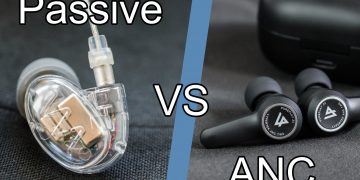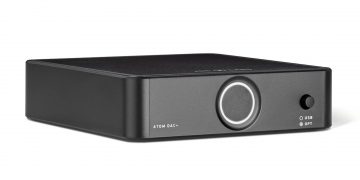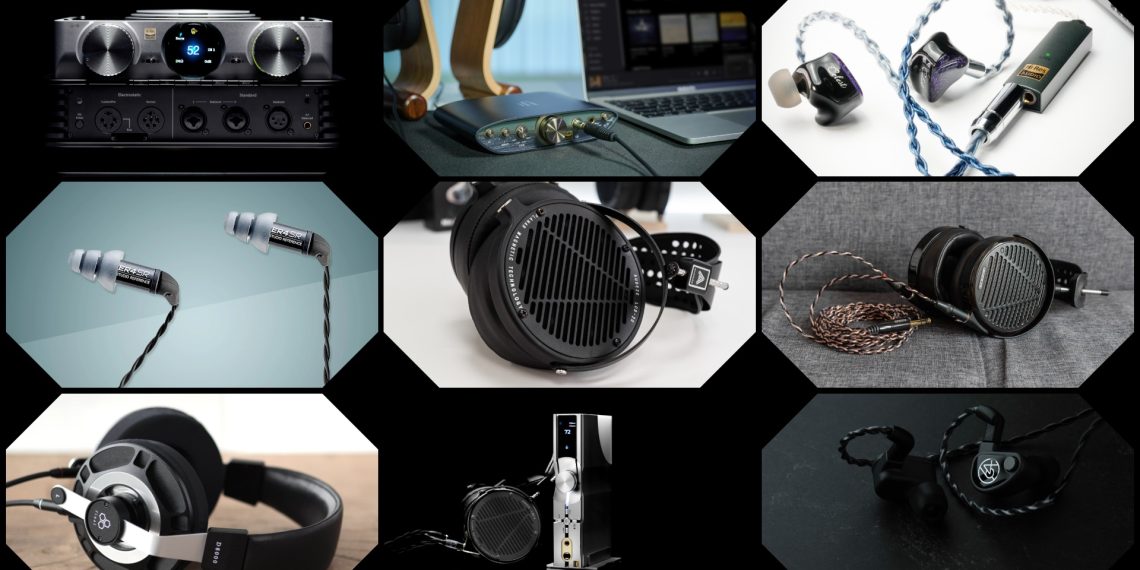Build your own Grado style headphones tutorial with Symphones V8 drivers
- Do you have a pair of Grados?
- Have you upgraded them to wood cups?
- Are you looking to build your own Grado style headphones?
If the answer to any of these is yes, then read ahead.
So who are Symphones? Symphones started off modifying Grado headphones with their original Magnum modifications. They then went on to develop Grado style drivers that slot right into most Grado cups and aftermarket cups. Today we are looking at the V8 drivers, their latest offering that are very different in design to the V7.
A big part of driver tuning is adding dampening materials to the diaphragm and magnet, and the new V8 have a completely new driver coating.
The V8 drivers in this review are installed in Rholupat spalted tamarind cups with a Grado SR60e headband and SMC connectors to allow for detachable cables. The cable used is made from Van Damme minature starquad.
So what do you need?
Some Symphones V8 Drivers: https://www.symphones.com/shop/symphones-v8
You will then need suitable cups to install the drivers in, the drivers will fit into all Grado cups excluding the PS/GS series. Please take care when removing the old drivers as to not damage the cups you will be installing the drivers into.
Alternatively you can buy wooden cups from a couple of places:
https://www.etsy.com/shop/ShipiboAudio
http://www.ellevenacoustica.com/
https://wabisabiheadphones.wordpress.com/
Once you have the cups you need a headband with gimbals from your old Grados, or a Sony MDR7506 headband. Alternatively Rholupat and Shipibo offer nice leather headbands and also aluminium gimbals and rodblocks.
The Symphones drivers will need soldering to your cable of choice and installing into the cups, to make sure they press fit tightly you may need a strip of insultion tape around the edge of the driver. I have installed SMC connectors into the cups so I can change cables if I need to.
Now you come to earpad selection, Grado OEM pads, or generic cheap eBay ones, take your pick but they all change the sound.
Symphones have tuned the V8 drivers to be used with OEM G-Cush pads, and the main review will be based using those.
Generic G-Cush pads add a little more body to the sound, but are not as detailed and clean sounding as the OEM G-Cush pads.
OEM L-Cush pads also work very well with these drivers, giving them the more aggressive Grado style sound, over the more spacious G-Cush sound.
———————————————————————————————–
READ MORE: Grado SR80e Headphone Review
———————————————————————————————–
Sound:
- Bass:
The bass is not as full as the newer E series of Grado, but it is more controlled and also extends lower, digging right down into the sub-bass with ease. The bass is still quite Grado like being about quality over quantity but it is cleaner and more separated. The bass never encroaches on the midrange, and the punch is really good on the V8 drivers. Changing the earpads affects the bass the most, with generic G-Cush and OEM L-Cush pads adding a few extra dB’s of bass which may appeal to some people. The bass is more dynamic and full on the V8 drivers than the lower end Grados, sounding more realistic in tone.
- Midrange:
The midrange sounds like a veil has been lifted, comparing to the Grado lineup you need to go to the PS500e at least to get this level of detail however the V8 are more spacious sounding. They still have the slightly aggressive tone to them, but are far more open soundstage wise. The upper midrange is not quite as upfront as Grados, leading to a slightly less fatiguing sound and also very minimal sibilance unless the recording has it. The midrange sits ever so slightly behind the lows and highs quantity wise, but not enough for it to be classed as recessed. The clarity and separation of the V8’s is what sets them apart from the original Grado drivers.
- Treble:
The treble from the V8’s is smoother and more refined than the peakier Grado drivers. In terms of quantity it is still up there with most Grados however they are better separated and airy, with less peaks and more effortless extension. I never find them to be grating and they compliment the rest of the sound perfectly. If you are used to more bassy headphones, yes these will sound a little bright, however I find the highs to be quite well balanced with the rest of the range.
- Soundstage and Imaging
More precise and also quite a lot wider than original Grados which are more direct and in your face. There is a lot of air between intruments and percussion comes through with excellent tone and control.
Conclusion:
These are an excellent upgrade for your current Grados or for a scratch build, they offer a more vivid and dynamic sound over original drivers. They sound as if a veil has been lifted from the whole sound, and the soundstage and imaging is far superior to lower end Grados. Articulate and dynamic lows, crystal clear midrange and sparkly highs, all that you love from Grados but supercharged.








 HiFiHeadphones Best Buy list
HiFiHeadphones Best Buy list